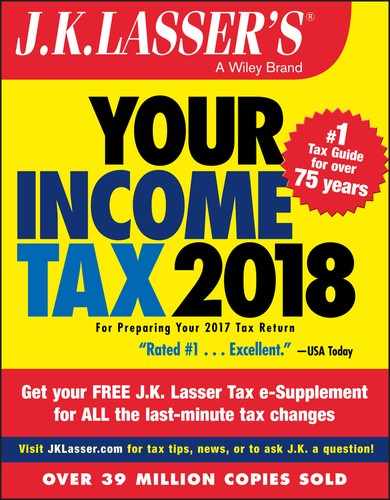| Tax-Saving Opportunities |
| Objective— |
Explanation— |
| Realizing long-term capital gains |
Long-term capital gains are taxed at lower rates than short-term gains and regular income. See Chapter 5 for basic capital gain rules. See Chapters 30 and 31 for discussions of special investment situations. |
| Earning qualifying dividends |
Qualified dividends (4.2) are subject to the reduced tax rates for long-term capital gains. |
| Earning tax-free income |
You can earn tax-free income by—
- Investing in tax-exempt securities. However, before you invest, determine whether the tax-free return will exceed the after-tax return of taxed income (30.10).
- Taking a position in a company that pays tax-free fringe benefits, such as health and life insurance protection. For a complete discussion of tax-free fringe benefits, see Chapter 3.
- Seeking tax-free education benefits with scholarship arrangements, qualified tuition programs and Coverdell ESAs; see Chapter 33.
- Taking a position overseas to earn excludable foreign earned income; see Chapter 36.
- Investing in Roth IRAs; see Chapter 8.
|
| Deferring income |
You can defer income to years when you will pay less tax through—
- Deferred pay plans, which are discussed in Chapter 2.
- Qualified retirement plans such as 401(k) plans (Chapter 7), self-employed plan (Chapter 41), and traditional IRA and Roth IRA plans (Chapter 8).
- Transacting installment sales when you sell property; see 5.21.
- Investing in U.S. Savings EE bonds or I-bonds (4.28–4.29, 30.12–30.13).
|
| Income splitting |
Through income splitting you divide your income among several persons or taxpaying entities that will pay an aggregate tax lower than the tax that you would pay if you reported all of the income. Although the tax law limits income-splitting opportunities, certain business and family income planning through the use of trusts and custodian accounts can provide tax savings; see Chapters 24 and 39. |
| Tax-free exchanges |
You can defer tax on appreciated property by transacting tax-free exchanges (6.1, 31.3). |
| Buying a personal residence |
Homeowners are favored by the tax law.
- If you buy a home, condominium, or cooperative apartment, you may deduct mortgage interest (15.2) and taxes (16.4). When you sell your principal residence, you may be able to avoid tax on gains of up to $250,000 if single and up to $500,000 if married filing jointly; see Chapter 29.
- Homeowners can borrow on their home equity and deduct interest expenses within limits (15.3).
|
| Take advantage of special personal tax breaks for education |
The tax law provides several breaks for education expenses; see Chapter 33, which discusses scholarships, grants, tuition plans, savings bond tuition plans, education credits, Coverdell Education Savings Accounts, and student loan interest deduction. |
| Take advantage of special tax breaks for health care expenses |
The tax law provides several breaks for health care expenses. Employer-provided health and accident plans, including flexible spending arrangements, are discussed in Chapter 3. Health savings accounts (HSAs) can be used to save for health care expenses on a tax-free basis (3.2, 41.10). ABLE accounts can be set up for individuals who become disabled before age 26 persons and be used to build up a fund from which tax-free distributions for qualified expenses can be made(34.12). You may be able to qualify for the premium tax credit to help offset the cost of premiums for coverage obtained through the government Marketplace(25.12). |
| Take advantage of personal tax credits |
See Chapter 25 for personal tax credits such as the premium tax credit, child tax credit, dependent care credit, saver’s credit and adoption credit that can reduce your tax liability. |

